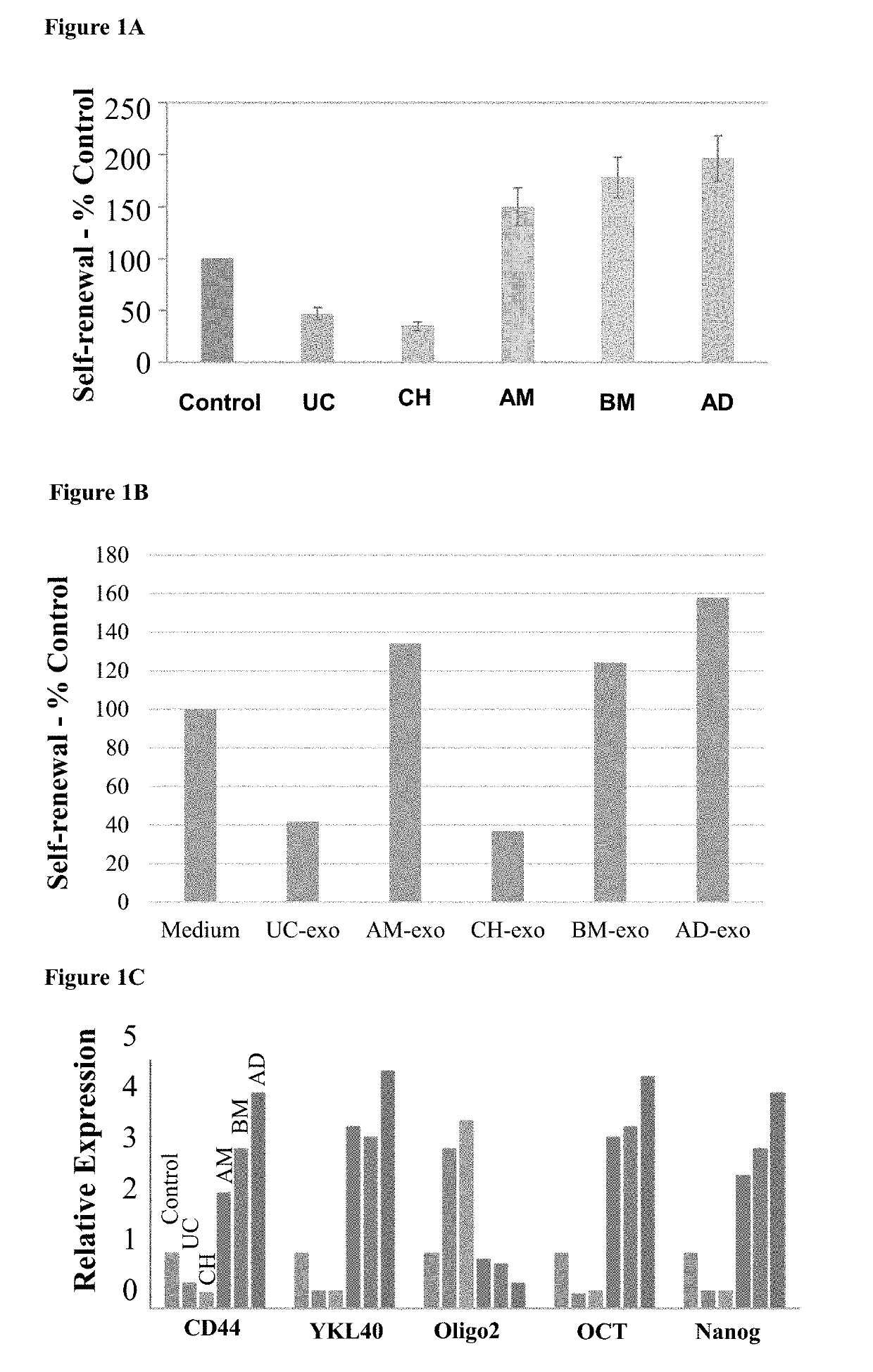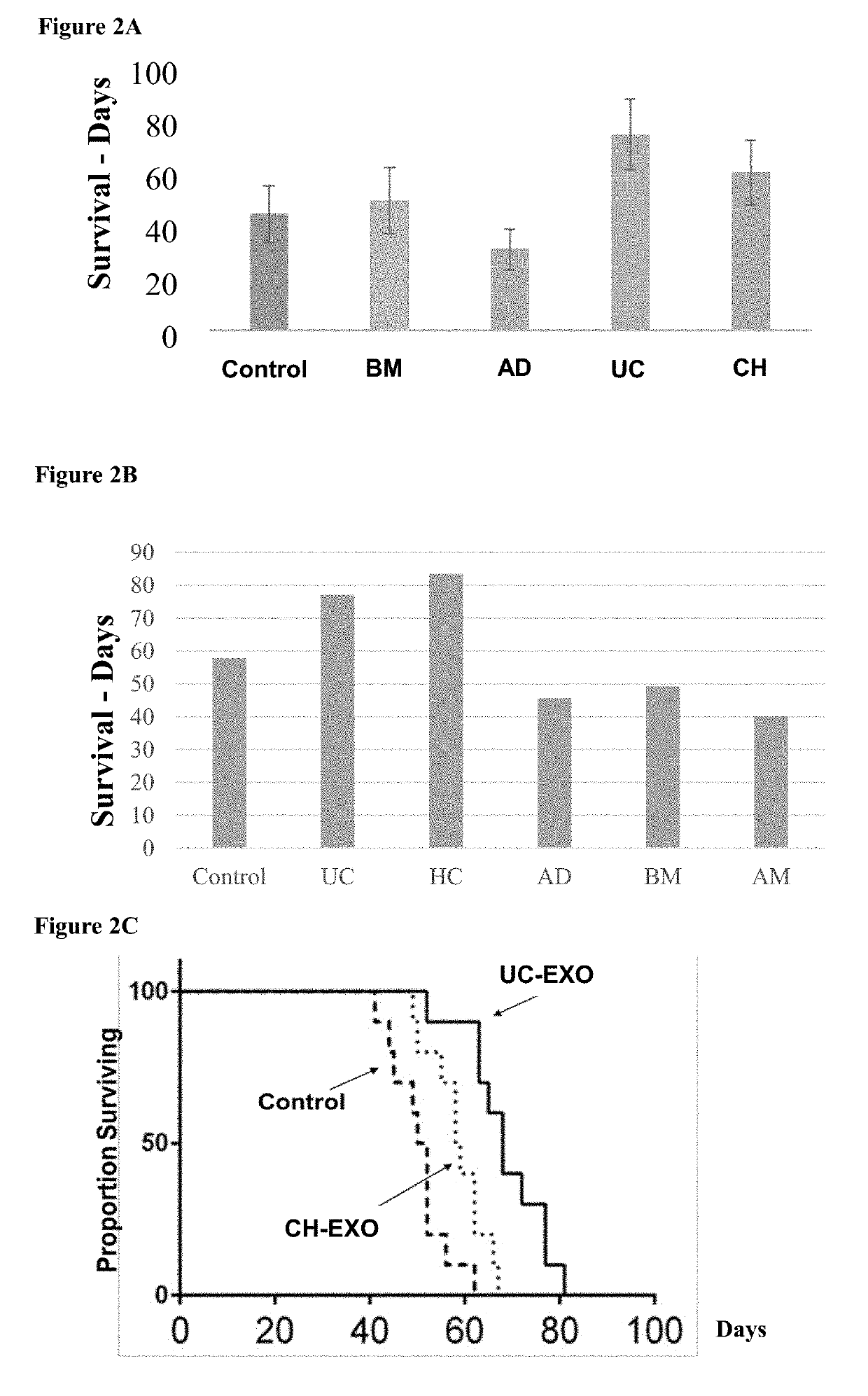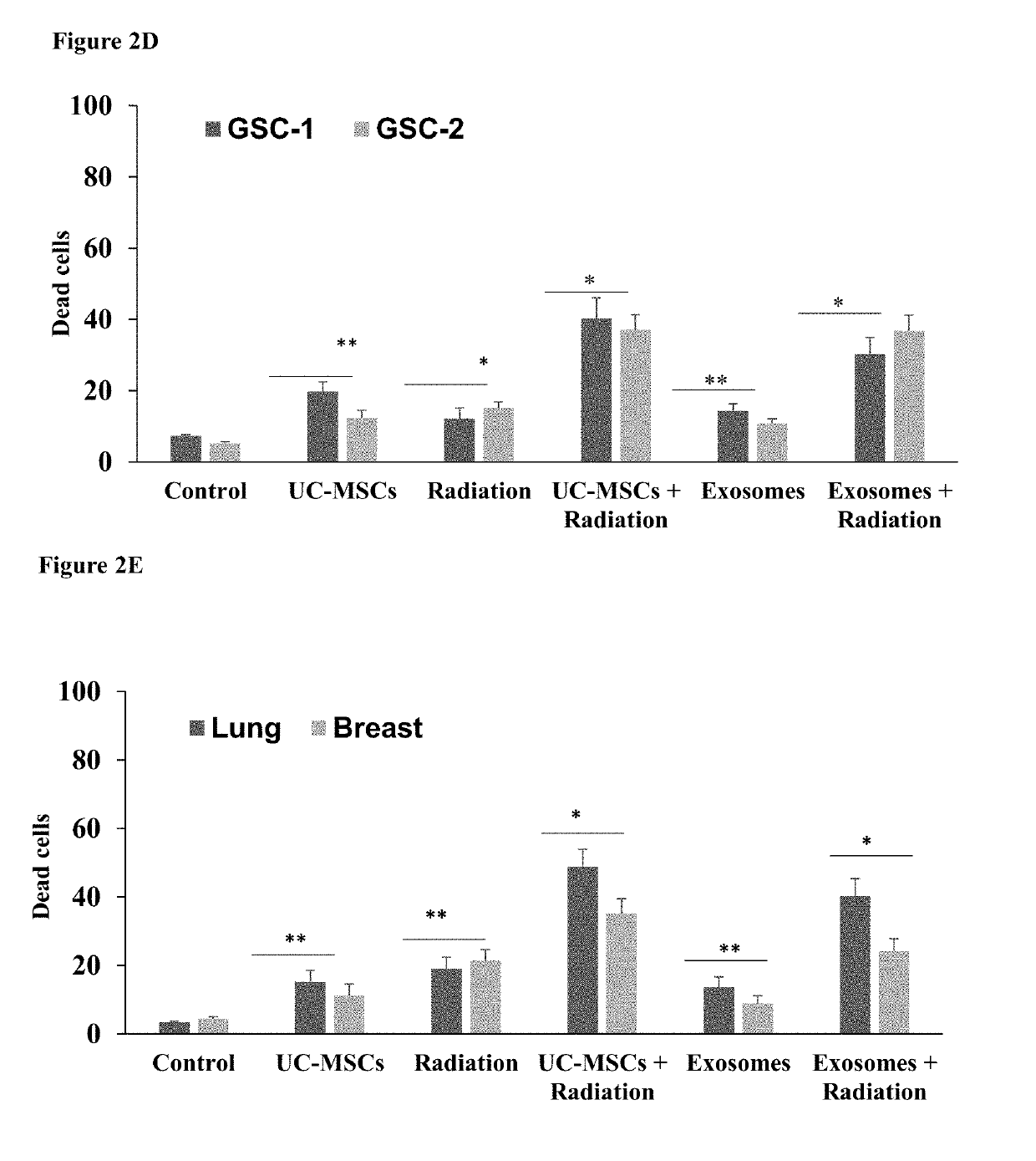Mesenchymal stem cells populations, their products, and use thereof
- Summary
- Abstract
- Description
- Claims
- Application Information
AI Technical Summary
Benefits of technology
Problems solved by technology
Method used
Image
Examples
example 1
Profiling MSCs Derived from Different Tissues
[0315]MSCs from different sources have been demonstrated to have differential cellular effects and therapeutic impacts in various clinical models. In addition, MSCs from each source represent a mixture of various subpopulations. In order to characterize different sources and subpopulations with specific characteristics and implications for more specific and efficient clinical applications, various parameters of these cells were compared and analyzed.
[0316]MSC from eight different tissues were examined: bone marrow (BM), chorionic placenta, (CH), amniotic placenta (AM), adipose (AD), umbilical cord (UC), Dental Pulp (DP), Exfoliated deciduous teeth (DD), Dental Follicular (DF).
[0317]Major differences were found between the MSCs that were derived from the different sources and also that each tissue could contain different subpopulations that are characterized by different profiles of markers. For example, with regards to the effects of spec...
example 2
MSCs have a Common Expression Profile
[0319]MSCs and their exosomes were further analyzed to obtain unique expression profiles.
[0320]Flow cytometry and fluorescence-activated cell sorting (FACS) enables the prospective enrichment of MSCs and can be utilized to study intact cells as well as specific cell surface antigens. To identify cell surface proteins expressed on the surface of MSCs (i.e. surface markers), a high throughput flow cytometry screen was performed, which allowed the identification of cell surface antigens differentially expressed in five different types of MSCs (UC, CH, BM, AD and DP). Each population of MSCs was analyzed for 324 surface markers.
[0321]Of the 324 investigated surface markers 51 were detected on all MSCs. They were the following: CD9, CD10, CD13, CD26, CD29, CD44, CD36, CD46, CD47, CD49a, CD49b, CD49c, CD49d, CD49e, CD50, CD51 / 61, CD54, CD55, CD58, CD59, CD61, CD63, CD71, CD73, CD81, CD83, CD87, CD90, CD91, CD95, CD97, CD98, CD99, CD105, CD108, CD109, C...
example 3
Each MSC and Exosome Subtype has a Unique Expression Profile
[0325]UC-MSCs were characterized by the unique expression profile found in Table 1.
TABLE 1UC-MSCs uniquely expressed, and enrichedRNAs, proteins, and exosomal factorlncRNAsDGCR5, GAS5, H19, HAR1A, HOXA3AS, HOXA6AS,KRASP1, MER11C, PCAT-32, STOT3, TU-00176miRNAsSee Table 10genesSee Table 11surfaceCD184, CD193, CD235a, CD318, CD255, CD268,proteinsfMLP, ITGA2, ITGA4, CD326secretedVEGF, ANG, PDFRAA, BDNF, NT-4, FGF4, TIMP1,factorsIL-8, HAPLN1, DMP1, Stanniocalcin1, ADAM23,SCG5exosomes:lncRNAsY4, PTENP1, NEAT1proteinsATP1B3, ATPB1, ATPB3, CD47, CD55, BSG, CSPG4,EPHA2, GPC1, GPRC5A, MME, MMP14, MPZL1, NCSTN,PLAUR, PVR, SLC16A1, SLC1A3, SLC1A4, SLC1A5,SLC2A3, SLC39A14, SLC7A1
[0326]CH-MSCs were characterized by the unique expression profile found in Table 2.
TABLE 2CH-MSC uniquely expressed, and enrichedRNAs, proteins, and exosomal factorslncRNAsSCA8, TU00176, LINCVLDLR, RORmiRNAsSee Table 10genesSee Table 11surfaceTCR alpha-beta, CD...
PUM
 Login to View More
Login to View More Abstract
Description
Claims
Application Information
 Login to View More
Login to View More - R&D
- Intellectual Property
- Life Sciences
- Materials
- Tech Scout
- Unparalleled Data Quality
- Higher Quality Content
- 60% Fewer Hallucinations
Browse by: Latest US Patents, China's latest patents, Technical Efficacy Thesaurus, Application Domain, Technology Topic, Popular Technical Reports.
© 2025 PatSnap. All rights reserved.Legal|Privacy policy|Modern Slavery Act Transparency Statement|Sitemap|About US| Contact US: help@patsnap.com



